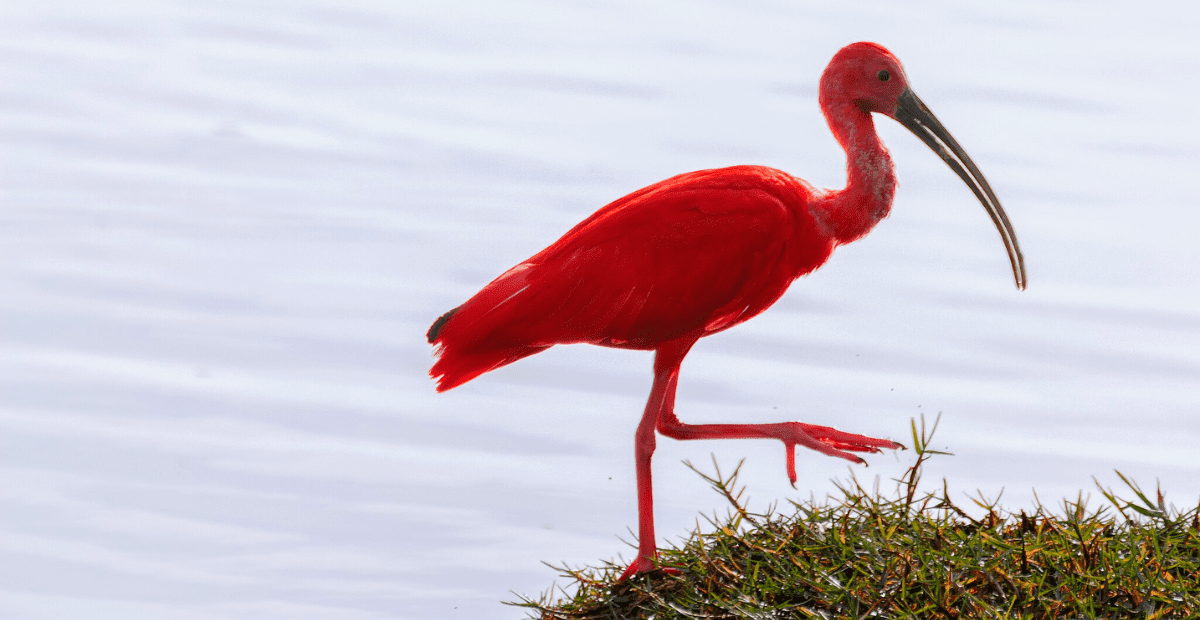Yes, red animals can naturally be that color. Animals come in stunning colors, and red is one of the most eye-catching. But have you ever wondered why some animals are red? It turns out that it’s not all about pigments as one would naturally think, many other elements are at play. In this blog post, we explore the main ones.
Before we dive into the science of animal coloration to explain why some animals are red, you might want to see some stunning red animals to remember how insane the red color on some of them can be. We compiled a list in the blog post below:
Jump links
- Why are some animals red?
- How can reflective structures make animals appear red?
- How can genes determine the coloration of red animals?
- Other factors can determine the coloration of red animals
Why are some animals red?
You see, the color in animals comes from different things, like special pigments and structures. Some of these pigments include melanins, carotenoids, and pteridines. These pigments are responsible for the vibrant colors you see in animals. From the bright red feathers of a cardinal to the deep red skin of a strawberry poison dart frog.
But it’s not just about pigments. Animals also have reflective structures in their bodies, making them appear red. It’s kind of like how a prism breaks light into different colors—you can think of these structures as doing something similar but with red light.
How can reflective structures make animals appear red?
Crystals and proteins can contribute to making animals appear red through a process called structural coloration. Unlike pigments, which absorb certain wavelengths of light and reflect others to produce color, structural coloration occurs when light interacts with intricate structures at the microscopic level, causing it to scatter and interfere in a way that produces specific colors.
In the case of crystals and proteins, their arrangement and properties can affect how they interact with light. Certain crystals, like purine crystals, and proteins, like those found in some animal tissues, can manipulate light in such a way that it reflects primarily red wavelengths. This can result in the perception of red coloration in animals, even in the absence of pigments that directly contribute to red hues.
For example, some animals, such as certain butterflies or birds, have microscopic structures in their feathers or wings that scatter light in a manner that selectively enhances red wavelengths, creating vivid red coloration. This phenomenon is often observed in nature and adds to the diversity of colors and visual displays seen in animals.
How can genes determine the coloration of red animals?
When it comes to the genetic architecture of color traits, there are complex mechanisms at play. Pleiotropy, where a single gene affects multiple traits, and the evolution of adaptive gene complexes, known as supergenes, are two mechanisms that are thought to explain the associations between color and other traits. However, further research is needed to fully understand these mechanisms and their importance in driving trait associations.
Other factors can determine the coloration of red animals
Now, when it comes to why animals are red, it’s not always just because of one pigment or structure. Often, it’s a combination of different factors working together. For example, in a fish, the red color of its scales might be influenced by how different types of cells in its skin interact with each other.
Conclusion
Scientists are still trying to figure out exactly how all these things combine to make animals the color that they are. They use fancy tools like high-tech sequencing machines to look at the genes and molecules involved. By studying these things, they hope to learn more about why animals have certain colors, how these colors evolve, and what they mean for the animals.
So, the next time you see red animals, like the ones we show you in this list, you can appreciate all the amazing biology that makes them that way.
If you are interested in reading more about animal coloration, we recommend you read this paper:
San-Jose, L. M., & Roulin, A. (2017). Genomics of coloration in natural animal populations. Philosophical Transactions of the Royal Society B: Biological Sciences, 372(1724), 20160337. https://doi.org/10.1098/rstb.2016.0337
Finally, if you want to keep learning about animals, we have an entire blog category dedicated to animal education. We answer some frequently asked questions about wildlife and provide information on the most searched topics regarding the animal kingdom. Below you can see the most recent posts of the category:






3 responses to “Why are animals red? The Surprising Reason”
[…] color? and the truth is: Yes. If you want to know the fascinating truth behind what makes them red, you can read here so that you can appreciate all the incredible biology that makes it that […]
[…] Why are animals red? The Surprising Reason […]
[…] Why are animals red? The Surprising Reason […]